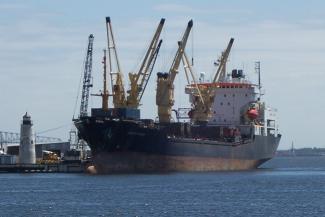User Story
In order to understand ice formation and the types of ice in the Great Lakes, the NOAA Great Lakes Environmental Research Laboratory (GLERL) and the U.S. Coast Guard use Synthetic Aperture Radar (SAR) data from the NOAA CoastWatch Great Lakes Node to monitor six different types of ice, ice thickness, and ice cover.

